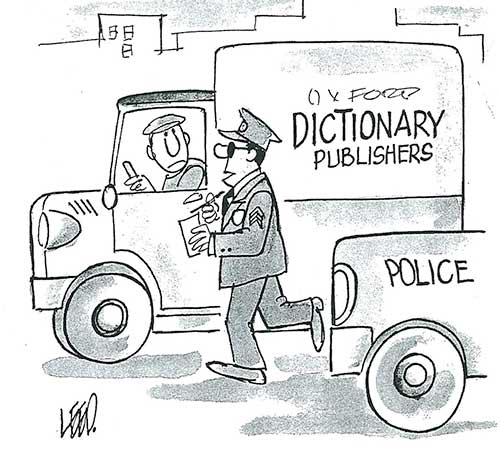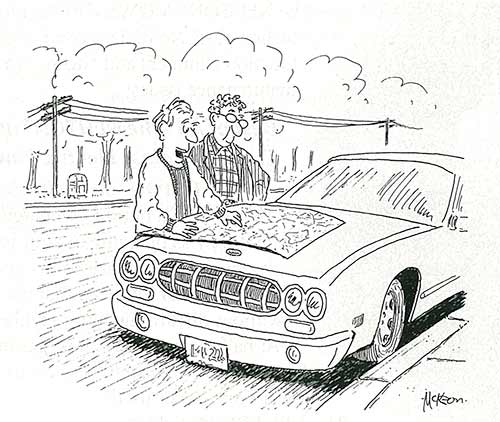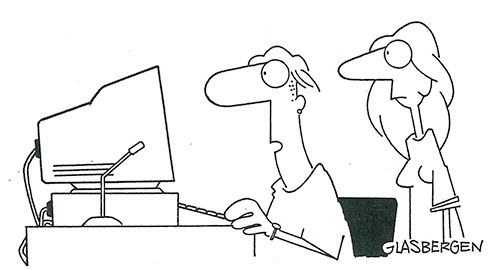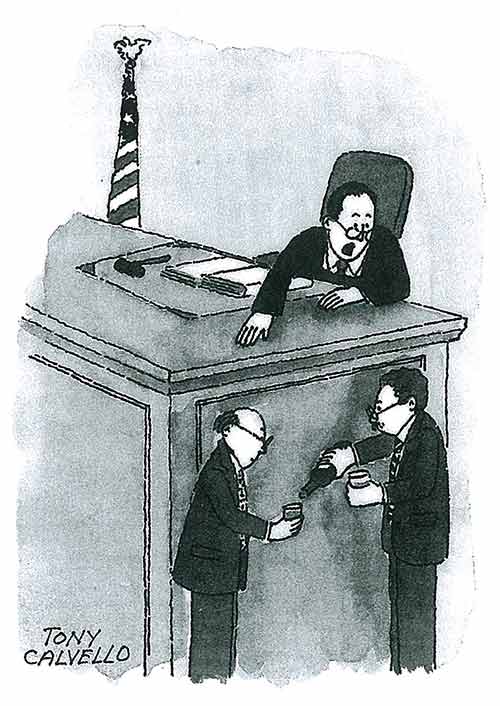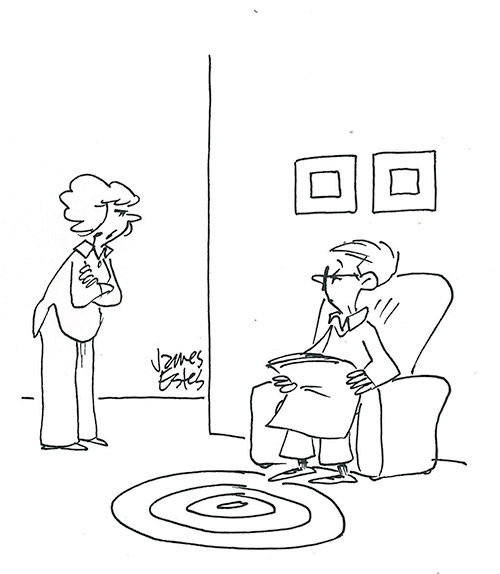-
Toy Story (1996)
Sorry for not giving you an advance warning, but you’re going to have to think about Sid’s nightmare-fuel hybrid toys now. Specifically: Legs, the toy that is essentially a pair of legs attached to a crane with a hook on the end. She’s supposed to be a hooker – don’t underestimate Disney’s subtlety!
-
Toy Story 3 (2010)
Sticking with the Toy Story series, think back to when Lotso pops the lips off of Mrs. Potato Head’s face to shut her up. Well, let me tell you: Mr. Potato Head was absolutely fuming, dropping this comment of questionable double meaning…
Mr. Potato Head: Hey, no one takes my wife’s mouth but me!
C’mon Mr. Potato Head, I know you were trying to sound tough but think that one through.
-
Muppet Treasure Island (1996)
Poor Kermit. He has to face the reality that Miss Piggy found another man during their time apart:
Miss Piggy: He was a pirate, I was a lady… you know the story.
Now there’s nothing wrong with that, she’s her own pig after all, she can do as she pleases; but when Long John Silver shows up, my heart breaks for Kermit all over again.
Miss Piggy: Hello, Loooooong John
Kermit: Oh no, him too?!
By all means, get amongst it Miss Piggy, but now we’re forced to imagine things about Tim Curry against our will.
-
Shrek (2001)
Shrek is full of jokes that do a great job of helping out the parents that were forced into watching what they thought was a kiddy animated film. One that might have gone over your head when watching as a kid, was Lord Farquaad’s name.
If you’re still struggling with your innocent little mind, just remove the ‘r’ and say it slowly.
-
Sausage Party (2016)
I debated long and hard about including this one on here. It’s almost TOO obvious you know? Like, the whole movie is one big, crude, sweary, sexually overt pun the whole way through. The main characters are a sausage and a bun who end up as a hotdog by the end of the movie for crying out loud.
-
Bee Movie (2007)
Okay I’m going to clean up my act a bit now, no more dirty jokes, from here on out it’s clean as a whistle. B Movie is a phrase we’ve probably all heard but it actually came about during the Golden Age of Hollywood, used for the second movie on a poster for a double feature.
On a somewhat cruel note, Bee Movie was reviewed with a resounding sigh, scoring mediocre ratings as a result. Guess it’s more of a C Movie.
-
An American Tail (1986)
The dead horse that is the tale/tail pun has been beaten beyond recognition, I agree, but I think I need to give some credit to this one for actually making an endearing, accessible story about the refugee experience of 20th century America. After all this is definitely the sort of dry topic you’d nod off to in a history lesson.
Also, it’s a great excuse to get an eyeful of Bluth’s animation which is a joy to behold, as per.
-
Ratatouille (2007)
This one’s almost like they just thought about the word ‘rat’ being in ratatouille and based an entire movie around that realisation. Don’t think you’ll catch many of us complaining though – this one’s a decent pun title attached to a cracker of a movie.
Speaking of Disney’s subtlety of puns, you may have missed this joke from the movie:
-
The Aristocats (1970)
All right, before I get accused of being biased in favour of rodents, here’s an equally great bit of wordplay from a feline source. You might remember Uncle Waldo, the British goose who regrettably spots his species on a menu in a cafe:
Uncle Waldo: “Prime Country Goose A la Provencale, stuffed with chestnuts”…? “And basted in white wine.” Hic!
Thomas O’Malley: Basted? He’s been marinated in it.
-
The Penguins of Madagascar (2014)
The last (and best) use of wordplay in this list by a country mile comes by way of this Madagascar spinoff. The main antagonist of the movie is Dave a.k.a. Dr Octavius Brine who lays down a staggering array of quality celebrity puns. Strap yourselves in, kids, because you’re about to be subject to a barrage of quick fire punnery, here are his best quotes:
“Nicholas. Cage them.”
“Elijah would you please take them away.”
“Drew. Barry. More power.”
“Robin, write this down.”
“Charlize! They’re on the ray!”
“Helen! Hunt them down!”
“William! Hurt them!”
“Halle! Bury them!”
“Hugh! Jack! Man the battlestations!”
“Kevin! Bake on! We’re still gonna need that victory cake.”
Phew, if you haven’t passed out from groaning too hard, check Fudge out on @fudgeanimation or Facebook.com/fudgeanimation and dish out some of your favourite animated movie puns that we missed. Catch you next week!
Founder & Creative Director. Dan started his career at Television Centre, working on some of the BBC’s flagship children’s television shows like Bob the Builder, the Teletubbies, Tweenies and Postman Pat. Dan is responsible for production and creative direction of client projects but is more generally involved in the artistic growth of the studio.
|
8 Comments I like this cartoon for two reasons. One I love silly play on words jokes — vowel/valve and two last year I was diagnosed with an enlarged left ventrical — fortunately it was not correct. Copyright Bizarro http://bizarrocomic.blogspot.com 8 Comments Albendazole 27/6/2015 12:42:16 am Way cool! Some very valid points! I appreciate you writing this write-up and the rest of the site is also really good.
ib extended essay topics 5/11/2015 04:19:32 am Very cool! Thanks for sharing this information, I appreciate this post, You did great work.
Paper Writing Services 18/12/2015 03:26:28 am This is really great information found here, I really like your blog. Thanks very much for the share. Keep posting
essay service 12/1/2016 02:57:00 pm
I like english word play
http://trucchigta5.xyz link 12/2/2016 12:31:00 pm Can I simply just say what a comfort to find an individual who actually understands what they’re discussing on the web. You certainly realize how to bring an issue to light and make it important. More and more people must check this out and understand this side of your story. It’s surprising you’re not more popular given that you definitely have the gift.
rushessay writing service 3/3/2016 07:05:39 pm Nice joke! I like it.
cinema box 11/7/2016 11:53:39 am nice one thank you for sharing
voot app download 11/7/2016 11:54:23 am good
Leave a Reply. |
Send your document today
mail@alterenglish.com Archives
October 2020 Categories
All |
.Yesterday’s Bizarro, and a Liam Walsh cartoon from the May 30th New Yorker:

(If you’re puzzled by the odd symbol in the cartoon — Dan Piraro says there’s one in this strip — see this Page.)

Pre-Columbian coffee. The ingredients: the big advertising campaign for 100% Colombian coffee — coffee from Colombia, named (in Spanish) for Christopher Columbus — and pre-Columbian artifacts, from the time before the arrival of Christopher Columbus in the New World (and the ensuing Spanish Conquest).
The logo for Colombian coffee, featuring Juan Valdez:

From Wikipedia:
Juan Valdez is a fictional character who has appeared in advertisements for the National Federation of Coffee Growers of Colombia since 1958 [almost 50 years ago!], representing a Colombian coffee farmer. The advertisements were designed by the Doyle Dane Bernbach ad agency, with the goal of distinguishing 100%-Colombian coffee from coffee blended with beans from other countries. He typically appears with his mule Conchita, carrying sacks of harvested coffee beans. He has become an icon for Colombia as well as coffee in general, and Juan Valdez’s iconic appearance is frequently mimicked or parodied in television and other media.
Buying a fowl. The ingredients:: the US tv game Wheel of Fortune (discussed in connection with #2 in a 6/19/14 posting), based roughly on the Hangman game, in the course of which contestants can buy a vowel (letter), and ancient Egyptian hieroglyphic writing, in which several of the hieroglyphs are drawings of birds, that is, fowl(s). In #2 we see an ancient Egyptian version of Wheel of Fortune.
Both cartoons depend not only on puns — Colombian / Columbian, vowel / fowl — but also on absurd juxtapositions of real-life situations: Colombian coffee and pre-Columbian artifacts (who would make coffee from pre-Columbian artifacts?), a tv show (Wheel of Fortune) set in ancient Egypt.
This entry was posted on May 28, 2016 at 3:04 am and is filed under Language and food, Language of advertising, Language play, Linguistics in the comics, Movies and tv, Puns, Writing systems. You can follow any responses to this entry through the RSS 2.0 feed.
You can leave a response, or trackback from your own site.
The purpose of that study is to discuss if there is a significant difference in vocabulary learning between the learners who have been taught through cartoons and the ones taught without the support of any illustrations. This study also aims to reveal the effects of the learners’ age and gender in vocabulary learning process. Cartoon extracts from the three English cartoons, such as Tom and jerry, The Spongebob, and The Fixies have been used for the experiment. In the study, the learners’ attitude toward vocabulary learning through cartoons, and their vocabulary learning strategies have been discussed. All in all, the study indicates the significance of cartoons in increasing the learners’ motivation and cultural awareness.
Keywords:
vocabulary teaching, comic strips, cartoons, motivation, attitudes
Цель этого исследования — обсудить, есть ли существенная разница в изучении словарного запаса между учениками, которых учили с помощью мультфильмов, и теми, кого учили без каких-либо иллюстраций. Это исследование также направлено на выявление влияния возраста и пола учащихся на процесс изучения словарного запаса. Для эксперимента были использованы отрывки из трех английских мультфильмов, таких как «Том и Джерри», «Губка Боб» и «Фиксики». В ходе исследования обсуждалось отношение учащихся к изучению словарного запаса с помощью мультфильмов и их стратегии изучения словарного запаса. В целом, исследование указывает на важность мультфильмов в повышении мотивации учащихся и их культурной осведомленности.
Ключевые слова
: обучение лексике, комиксы, мультфильмы, мотивация, взгляды
Introduction
The use of cartoons in language classes is quite seldom. Though their language is simple, and cartoons are really popular among the learners, the majority of teachers ignore them. In the way that Carter (2008) (Carter, 2008:48) [1] states, there might be some reasons behind it. The most probable one is teachers may not have enough knowledge about cartoons and visual material. In other words, they cannot manage to connect cartoons with learning even in their heads. They view cartoons as a heavy burden on their shoulders, since course books are the only, sufficient source in regard to their outlook. Another cause may originate from the lack of existing research. Because cartoons are brand new instruments among educators, this might prevent them to be accepted in classes.
This study aims at discussing the use of cartoons in language teaching and taking attention of language learners to the place of cartoons in language learning. Additionally, this study may arise the learners’ awareness toward visuals.
This study has been conducted to receive the answers of the following research questions:
- What is the role of cartoons in vocabulary learning?
- Are there any significant differences between the achievement scores of the learners who have been exposed to cartoons and those of the learners who have been exposed to the texts without cartoons?
- Do cartoons affect the learners’ levels in overall achievement of English lesson at the end of the course?
EFL and ESL learners at all levels are required to speak English fluently. In four skills (listening, speaking, reading and writing), English language teachers ask them to use words and vocabulary no matter what they are teaching, since vocabulary and words are indispensable parts of teaching all the skills. When looked up the definition of ‘vocabulary’, Cambridge Advanced Learner’s Dictionary [2] refers it as “all the words that someone knows, learns or uses.” Up to now, a high number of language instructors could not have the notice of this crucial issue: vocabulary teaching. Notwithstanding, unlike in the past, nowadays, the learners are well aware of the need of vocabulary any more. Vocabulary teaching has been taken into account in the course of time by different scholars. Crystal defines vocabulary as the Everest of language, because a person who wants to be able to communicate in a certain language has to master the vocabulary of that language for the first time [3]. The reason why word items are accepted as the backbone of language studies comes from the fact that vocabulary knowledge is among the best marker of spoken skill; it raises linguistic awareness and word recognition, hence vocabulary teaching is beneficial not only to English language learners in oversea countries indeed, but native speakers, too. For example, when cartoons are integrated into those phases, learners’ deduction, catching the main topic, relating it to their lives, and making smooth transition from one step to another will be attained. Furthermore, they will have learned language task and target words with fun.
Lightbown and Spada explain what ‘knowing a word’ means item by item. [4]
— Grasping the general meaning in a familiar context,
— Providing a definition or a translation equivalent,
— Providing appropriate word associations,
— Identifying its component parts or etymology,
— Using the word to complete a sentence or to create a new sentence,
— Using it metaphorically,
— Understanding a joke that uses homonyms.
Literature review
The significance of vocabulary has already been explained; still a range of factors, such as motivation, getting the learners to be independent, use of dictionary, providing multiple exposures in contexts, timing, supplying sufficient review and reinforcement, using appropriate activities depending on the learner needs/levels, what to be taught, and so on need to be considered in-depth throughout teaching. Accordingly, Brown and Harmer dwell upon the truth that teaching vocabulary cannot be restricted to refer to dictionaries or to give a hand during instruction [5], [6].
Zainuddin et al. present cartoons as: “the use of visuals (graphs, charts, pictures, objects, realia), gestures, demonstrations, and motherese/parentese.” [7] By using these items in questions of short answers, yes/no and either/or in the beginning steps of SLA, they could more efficiently reinforce the comprehension process.
Wang and Yang have outlined the other principles. As to Affective Filter Hypothesis, it holds that the essential pieces, such as motivation, emotion, characteristic features of the learners that have all influences individually on language learning process. The more they feel relaxed, the more benefit they gain from the course increasing the magnitude of input more. Nevertheless, the learner variables cannot be missed out in treatment either [8].
Another relative amount of cartoons is their being extensive reading texts. Like free voluntary reading, extensive reading task could be the most dynamic appliance of education in language teaching. Its function is to boost literacy rate and advance the lexicon.
Khansir has collected and epitomized plenty of scientists’ study to deal with the investigations and changing outlook toward errors in Linguistics [9].
Prior to explanation of the term “cartoon” and its adaptation to ELT classes, describing its correct position out of all the illustrations would simplify the comprehension of its influence on education. Furthermore, creating a direct proportion between images and teaching vocabulary will give the answer of why to select cartoons, not other visuals.
Illustrations or visuals include drawings, pictures, comic strips, cartoons, and photographs, any kind of images, graphics, charts, maps or video films. That’s why; illustration is an umbrella term covering any visual materials under the same title. When it comes to picture, it can be used as the synonym of image or a drawing.
In language classes, teachers have to ponder not only what cartoons to use for the learners to learn with fun, but how to lecture with the help of these materials to pick up the learners’ vocabulary competence. That’s why; educators feel the need of a good many practices to implement in classes. Here is the list of various tasks, being modals to teachers:
Comic Jigsaw
In this activity, cartoons are selected as comic strips and teacher groups the learners before clearing up how to convey these strips. The learners are handed out different parts of a story and required to talk with their partners or group members in order to complete and comprehend it. After finishing, they might rewrite it by using speech bubbles, lines or frames, which is optional [10].
Adding a
Panel
Being evident from its name, in this exercise, the learners extend a story with their panels like making a guess while reading, learning both comprehension strategies and language, summarizing the text, or adding their own works as favorite reading tasks of them. It orients the learners to make predictions, which occupies the learners with the text and assists them to interpret it much better. Besides that getting the meaning of words in cartoons makes the learners’ interpretations easier. This activity functions via “what happens next?” question to serialize and enlarge the strips with their drawings. In the end, the learners can read each others’ stories to see what kind of different ideas are come up with or they may work cooperatively and add their drawings one by one to each strip. Through Adding a panel, teachers have the learners work in cooperation. Together, they determine the most pertinent extra board at the end of the readily prepared cartoon texts. This activity could come in handy in crowded classes to save time, alternatively teachers may have to listen each learner or stimulate and let them speak in L2 personally.
Time Traveler
The learners might investigate common affairs exploiting cartoons. In this activity, learners manipulate both new and at least six-decade-old cartoons to refer them in each unit in an order. Due to numerous novels with well-known characters like Batman, Superman and Catwoman, they do not find them bizarre to study in their stories.
Cartoons without Text
In the wake of skimming and scanning the cartoon, to check the learners’ memory span and retention skills, the researcher makes them practice the same cartoon without any notes; the learners are asked for writing their own statements subjectively on a colored or black and white draft. Thus, they center and remember the newly acquired words, act them up, order the sections of the narrative and verbalize what happened with their own words synoptically.
Methodology
This study has been implemented on Pre-intermediate Kazakh learners of English language to investigate the impacts of cartoons in vocabulary teaching and learning process in local school. Three popular English cartoons Tom and Jerry, The Spongebob and The Fixies have been chosen and the students have been exposed to. The participants were divided into two groups: experimental and control groups. To find answers to these research questions, a quasi-experimental research design with an experimental and a control group has been employed. In order to assess the efficiency of the cartoons in vocabulary teaching, the students in the experimental group were exposed to the cartoons to teach vocabulary.
Findings and Discussion
The purpose of this study is to detect the effects of cartoons in vocabulary learning process of English language learners at Pre-Intermediate level.
The Results According to the Experimental and the Control Groups
Vocabulary achievement scores of both the experimental and the control groups from all the vocabulary tests are (t(65)=1.092, p=.279>.05).
Table 1
Vocabulary Test Results of the Groups
|
|
|
|
|
|
|
|
|
|
|
|
|
49.19 |
17.55 |
65 |
1.092 |
.279 |
|
|
|
44.40 |
13.30 |
In Table 1, the experimental group’s mean in vocabulary test scores is 49,19, while it is 44,40 in the control group. There is no significant difference between both groups’ mean scores. In spite of this, the experimental group seems more successful than the control group according to Table 1.
That result also corresponds with the outcome of rubrics of both groups. The experimental group members have disagreed on the idea that cartoons make them feel bored in question 9. Most of the students in the experimental group think that pictures have drawn their attention. It may be because of the fact that they show a positive attitude toward visuals, since they are attractive to them as is indicated by the results.
To put it simply, the students both in the experimental and the control groups expect to take reading lessons through cartoons, on the grounds that these visual tools make learning process much easier by reducing their responsibility. Furthermore, cartoons do not necessitate a complex grammatical structure or vocabulary pool to be comprehended; the students use their communicative competence instead of grammatical competences. Thus they do not make the students get stunned. They have acquired words stayed in short, working and long term memories in turn by opening new doors into the students’ academic studies, too. It is because of all the motives that the students in both groups outnumber their positive feelings toward cartoons, and they indicate that they are satisfied with this supplementary material to be adopted to the classes. By the same token, the experimental group have mostly promoted the position of pictures in vocabulary learning by expressing that the pictures in the texts help them to infer the meanings of the words. Similarly, having looked at the third question of vocabulary learning strategy test, the maximum points have been added to determination strategy with their responses that they spend a lot of time about how to associate the words with an item that they have known before.
Nevertheless, when the experimental group’s overall achievement in vocabulary test is reminded, it is not so promising. They could just get up 49, 19 mean, not even the half of total score 100. It places emphasis on the lack of vocabulary competence of the students. No matter how big percentages of subjects have given their positive viewpoints (70, 2 %) that they have not lost their time while reading colored cartoon texts, they confess that in general they could not learn new words subconsciously in regard to their answers in rubric. It can be said that this goes by what Terrell calls Krashen’s “Monitor Hypothesis” [11]. They have taken sides of acquisition than learning so as to acquire language, not learning. That might be one of the ground why participants could not gain self-confidence to get through vocabulary learning. Nonetheless, not finding Krashen’s acquisition-learning dichotomy viable, claim of McLaughlin, which is on the basis of controlled to automatic process, cannot said to work in this search either.
Standing with the same party, the second question in rubric unveils the fact by their answer “I specify some particular words and only concentrate on lexical items” and “I try to replicate a real life interaction and employ new lexical units in my talks” they majorly activate their metacognitive strategies, such as testing themselves, and either skipping or keeping on getting new words. What they believe about vocabulary learning is that words ought to be studied and put to use with selective attention. Over and above, their replies to fourth question in vocabulary learning strategy test divulges how they are bound to their own learning: “When I discover the meanings of some vocabulary on my own, learning is most efficient during the time that my teacher is giving a reading lesson.” When it comes to one other question asking for their most-liked way before reading a text, it receives the reply of doing nothing special, namely using no particular strategies at all (25,4 %). This makes the case clear that they cannot control their learning, and they are in need of outside help to complete vocabulary learning procedure. However, these ‘apron strings’ may decrease their performance and in the long run it may create an unwillingness. As Dörnyei and Ushioda define being the leading element in affective factors of motivation, the students’ self-esteem could weaken and they may lose the dominancy of intrinsic motivation described as the essential point in learning a language [12]. Then this may lead the students just to see the end of the tunnel which is what signifies without acquiring knowledge within a discipline [13].
The next commentary might be given with Liu who shows that if the students fail to comprehend the text, it can be correlated what they notice consciously throughout 109 reading [14]. In a similar way, the students have largely accepted that when they see the target words in reading texts and remember them, it means that they have learned these word items.
Another critical angle to behold is the students’ general belief about vocabulary and its strength on picking up English language. Most of the students in the experimental group, confirming cartoons’ power, have concluded how crucial role it has in learning process. Although the control group is aware its position, since they could not read with cartoons, their ratio is a bit lower (90,0 %) than the others. 76,6 % of the students think that cartoons make learning vocabulary enjoyable. The possible reason behind their success is that the students were asked to match the vocabulary items with the pictures, which are visual aids to trigger their memories as Krashen emphasizes.
It can be inferred that the cartoons help the students to get the meanings of the words subconsciously. Then it gets the students to comprehend (grasp something mentally) the texts well. Therefore, in general sense, the cartoons can be said to increase the capability of the students’ prediction in words’ interpretation with the help of keys to comprehension, such as pictures, the gestures and mimics of the people, colors or any other expressions.
Conclusion
The goal of this research has been in general sense to reveal the impacts of cartoons on vocabulary learning. The research questions of the study are about the role of the cartoons in teaching and learning vocabulary, differences between the achievement scores of the students in the experimental and the control groups.
During the experimental sessions, the experimental group found cartoons quite motivating, easier, intelligible, attractive and permanent. This may be not only because of the effective functions of the cartoons in the experimental group, but also the students’ vocabulary learning strategies. The experimental group, having been given an advantage of cartoons, a chance to use their learning strategies manages to get a higher success in vocabulary achievement test in guessing word meanings with the help of critical thinking skills.
For all the students, the common vocabulary learning strategies were determination and metacognitive strategies, while these two were the same for the experimental group’s favourites, the control group mainly held up only memory, social and metacognitive strategies. This might stem from the fact that due to the lack of visual support in vocabulary text, the control group used rote learning.
References:
- Carter J. B. Comics, the canon, and the classroom //Teaching visual literacy: Using comic books, graphic novels, anime, cartoons, and more to develop comprehension and thinking skills. — 2008. — С. 47–60.
- Walter E. Cambridge advanced learner’s dictionary. — Cambridge university press, 2008.
- Crystal D. The Cambridge encyclopedia of the English language. — Ernst Klett Sprachen, 2004.
- Spada N., Lightbown P. M. Second language acquisition //An introduction to applied linguistics. — 2010. — С. 108–123.
- Brown H. D. Principles of language learning and teaching fifth edition //White Plains, NY: Pearson Education. — 2007.
- Harmer J. The practice of English language teaching. Harlow //England: Pearson Education. — 2007.
- Ariza E. N., Zainuddin H. Fundamentals of teaching English to speakers of other languages in k-12 mainstream classrooms. — Kendall Hunt, 2002.
- Wang Y., Yang J. Steven krashen’s sla theories and vocabulary teaching in college oral english //International Academic Workshop on Social Science (IAW-SC-13). — Atlantis Press, 2013. — С. 860–863.
- Khansir A. A. Error Analysis and Second Language Acquisition //Theory & Practice in Language Studies. — 2012. — Т. 2. — №. 5.
- Gavigan K. Graphic novels: a road map to academic success //Knowledge Quest. — 2013. — Т. 41. — №. 3. — С. 6.
- Terrell T. D. Acquisition in the natural approach: The binding/access framework //The Modern Language Journal. — 1986. — Т. 70. — №. 3. — С. 213–227.
- Dörnyei Z., Ushioda E. Teaching and researching: Motivation. — Routledge, 2013.
- Smallwood J. E. An anatomist’s comments on learning and teaching //Journal of veterinary medical education. — 2004. — Т. 31. — №. 1. — С. 80–83.
- Liu J. Effects of comic strips on L2 learners’ reading comprehension //TESOL quarterly. — 2004. — Т. 38. — №. 2. — С. 225–243.
Основные термины (генерируются автоматически): словарный запас, EFL, ELT, ESL, SLA, TESOL, помощь мультфильмов.
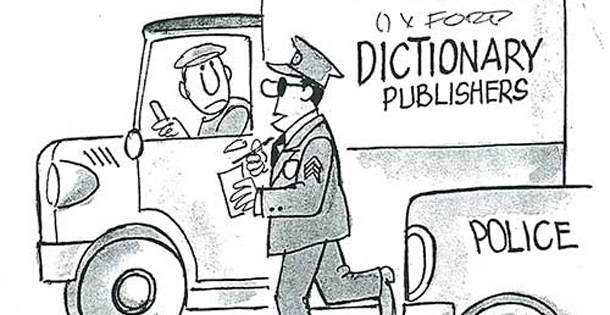
Weekly Newsletter
The best of The Saturday Evening Post in your inbox!
Post cartoonists not only draw clever pictures, they enjoy playful puns and laughable language, too.
“All right, where’s the conflagration?”
January/February 1993
“By, golly, you’re right! ‘Cleanliness’
right there east of ‘Godliness’!”
March/April 2003
“I’m making a list of all the things I ought to do before I die.
It’s my oughtobiography.”
May/June 1999
“Counsel, this isn’t exactly what the court’s definition of a ‘sidebar’ is.”
May/June 1997
“Our 40th anniversary is not a millstone! The word is ‘milestone’!”
May/June 2007
Become a Saturday Evening Post member and enjoy unlimited access.
Subscribe now










